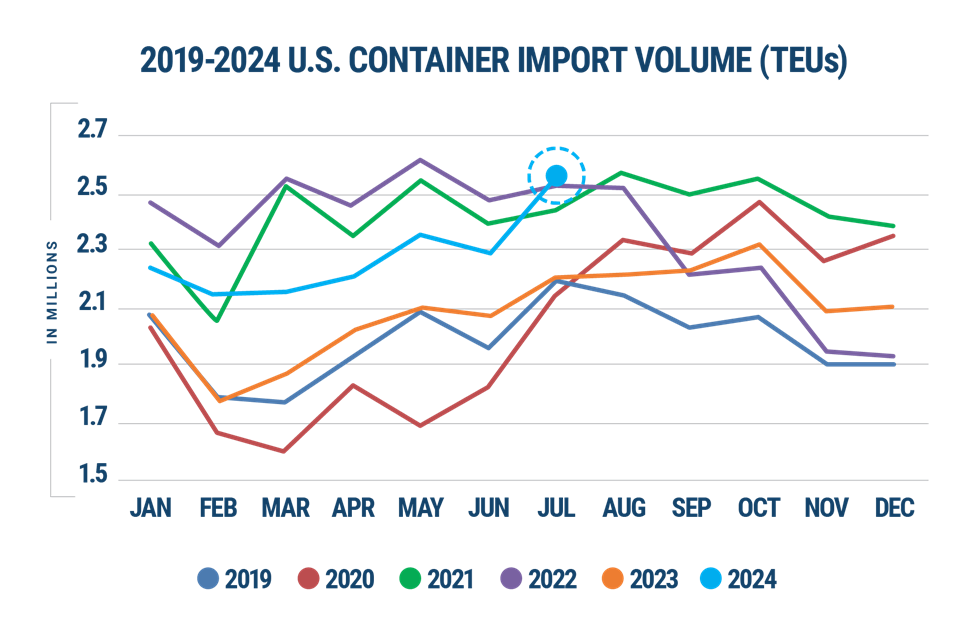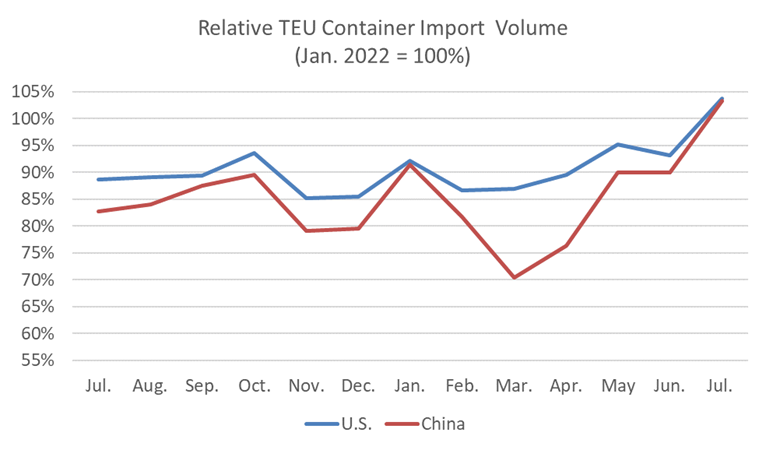US Container Imports Hit 26-Month High In July

July 2024 saw a significant surge in U.S. container import volumes, reaching 2,556,180 twenty-foot equivalent units (TEUs), an 11.2% increase from June 2024. This marks a 26-month high and the third-highest level on record, surpassed only by May 2022 and March 2022. This is also the first time in 26 months that volumes have exceeded the 2.4 million TEU threshold, a level that previously led to port congestion and delays during the pandemic years.
Despite this high volume, overall port transit times showed minimal impact, with negligible improvements or declines. According to Descartes' "August Global Shipping Report," July’s import volume was 16.8% higher than July 2023 and 16.3% above pre-pandemic levels in July 2019. Import volumes for the first seven months of 2024 were 15.6% higher than the same period in 2019.
“Despite July imports surpassing the 2.4M TEU level that previously stressed ports and inland logistics, overall port transit times in July decreased from June, which is positive for importers,” said Jackson Wood, Director of Industry Strategy at Descartes.

Image: July 2023 – July 2024 Comparison of U.S. Total and Chinese TEU Container Volume. Source: Descartes.
July U.S. Imports From China
U.S. imports from China reached a record high in July 2024, totaling 1,022,913 TEUs. This figure represents a 14.7% increase over June 2024 and a 25% rise compared to July 2023.
The July 2024 imports exceeded the previous record set in August 2022 by 19,188 TEUs. Wood emphasized that the significant growth in Chinese imports contributed to the overall increase in U.S. container volumes for the month.
However, the Descartes report also warns of potential global supply chain volatility in the coming months.
Factors such as ongoing conflicts in the Middle East, stalled labor negotiations at U.S. South Atlantic and Gulf Coast ports, and reduced port capacity as container volumes gradually return to the Port of Baltimore following its reopening in June could disrupt supply chains in the latter half of the year.
Source: Descartes